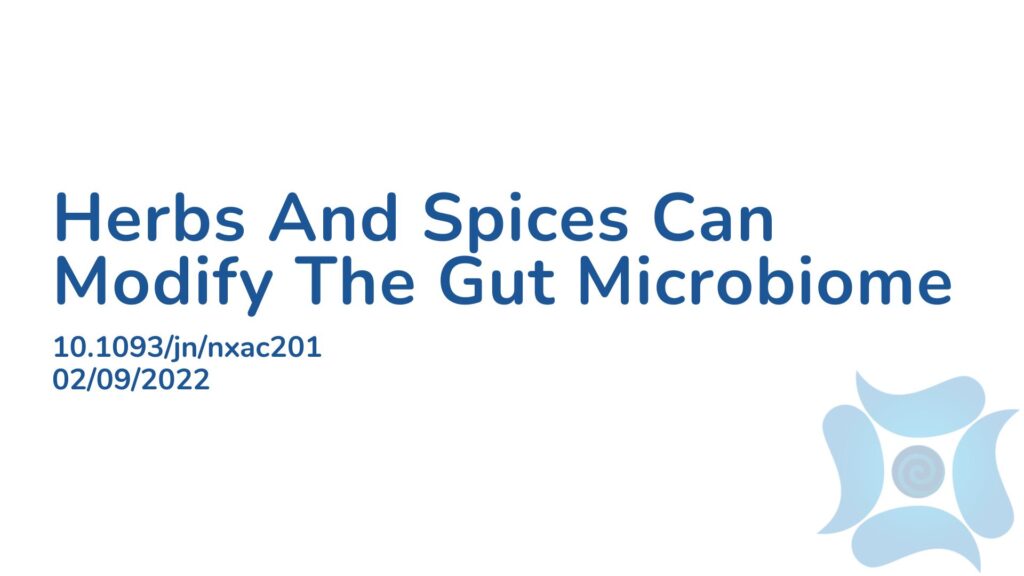Summary:
Herbs and spices are rich in polyphenols which literature has shown can positively influence the human gut and its bacterial environment. There has been approximately 52 phenolic compounds identified in herbs and spices, each with different benefits. However, there is limited research on the effect of specific herbs and spices on the composition of the human gut, instead there is research isolating the role of polyphenols. The aim of this study was to examine any bacterial changes to the human gut after following an average American diet with varying levels of herb and spice consumption. The researchers conducted this research in adults at risk for cardiovascular disease. The results showed that the addition of herbs and spices to an average American diet had the ability to shift the bacterial environment of the gastrointestinal tract after just four weeks in adults at risk of cardiovascular disease. Further research is needed to investigate how these changes influence human health and whether health recommendations should seek to include herbs and spices, however this is a promising lead as it suggests that herbs and spices exist beyond adding flavour to our food.
Abstract:
Background: Herbs and spices are rich in polyphenolic compounds that may influence gut bacterial composition. The effect of culinary doses of herbs and spices consumed as part of a well-defined dietary pattern on gut bacterial composition has not been previously studied. Objectives: The aim of this prespecified exploratory analysis was to examine gut bacterial composition following an average American diet (carbohydrate: 50% kcal; protein: 17%; total fat: 33%; saturated fat: 11%) containing herbs and spices at 0.5, 3.3, and 6.6 g.d–1.2100 kcal–1 [low-, moderate-, and high-spice diets, respectively (LSD, MSD, and HSD)] in adults at risk for CVD. Methods: Fifty-four adults (57% female; mean ± SD age: 45 ± 11 y; BMI: 29.8 ± 2.9 kg/m2; waist circumference: 102.8 ± 7.1 cm) were included in this 3-period, randomized, crossover, controlled-feeding study. Each diet was provided for 4 wk with a minimum 2-wk washout period. At baseline and the end of each diet period, participants provided a fecal sample for 16S rRNA gene (V4 region) sequencing. QIIME2 was used for data filtration, sequence clustering, taxonomy assignment, and statistical analysis. Results: α-diversity assessed by the observed features metric ( P = 0.046) was significantly greater following the MSD as compared with the LSD; no other between-diet differences in α-diversity were detected. Differences in β-diversity were not observed between the diets ( P = 0.45). Compared with baseline, β-diversity differed following all diets ( P < .02). Enrichment of the Ruminococcaceae family was observed following the HSD as compared with the MSD (relative abundance = 22.14%, linear discriminant analysis = 4.22, P = 0.03) and the LSD (relative abundance = 24.90%, linear discriminant analysis = 4.47, P = 0.004). Conclusions: The addition of herbs and spices to an average American diet induced shifts in gut bacterial composition after 4 wk in adults at risk for CVD. The metabolic implications of these changes merit further investigation. This trial was registered at clinicaltrials.gov as NCT03064932.
Article Publication Date: 02/09/2022
DOI: 10.1093/jn/nxac201



